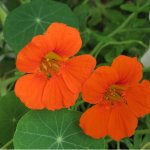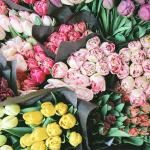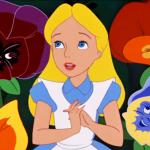5 Tips for Using Flowers to Stage a Home
Preparing a home for sale is no simple task. Not only will you have to bring in a home inspector to tell you what must be repaired before you can even think about listing your property, but you’ll probably find all kinds of cosmetic issues that could easily tank the sale of your home if they’re not addressed. Aside from clearing out the clutter that you’ve accumulated during your time in the home, including personal items and even furniture, you’ll likely have to paint and install new flooring (or offer buyers monetary compensation to correct these oversights). You might even want to update fixtures or add some curb appeal in a bid to make your home more attractive to prospective buyers. In short, a lot of work goes into staging your home before you start showing it. And one thing you may have overlooked is what flowers can add to your staging strategy. Here are just a few tips to use these fragrant blooms to your best advantage when selling your home.
- Treat them like an accessory. There are all kinds of adornments you can use to complete the look of your home. For example, throws and pillows can spice up a boring couch while a bare dining room table should feature at least a centerpiece, if not full service with artfully arranged plates, glasses, napkins, and silverware. The idea is to allow prospective homeowners to see the possibilities inherent in the home by providing a glimpse of what it will look like when tastefully decorated. Flowers can contribute to the overall picture, but only when used appropriately. So choose floral arrangements that enhance the rooms they’re in, including color, scope, and size. Like any accessory, they need to match the rest of the décor.
- Consider allergies. Plenty of people are allergic to plants, and flowers in particular. But you can avoid triggering allergic reactions in a couple of ways. First, you can steer clear of flowers that are known to induce allergic reactions; chrysanthemums, daisies, and sunflowers are amongst the most common culprits. But you can also ask your florist for blooms that are female. Since they don’t produce pollen they are far less likely to trigger allergies in prospective buyers visiting your property.
- Common scents. Some flowers are more fragrant than others, but this may not necessarily be a good thing. Too much aroma can be overwhelming, so instead of filling your home with cloying scents like gardenia, jasmine, or lilac, consider implementing a mix of flowers, some fragrant and some relatively odorless so that you don’t offend sensitive sniffers. And keep in mind that common scents, like roses, are more likely to appeal to a broad range of buyers, especially if the scent is subtle rather than overpowering.
- Cost. You could easily spend a ton of dough on floral arrangements to complement your home, but you don’t have to go all out in order to make a statement or spice up a boring space. You could trim roses from the bushes in your front yard or stick a handful of wildflowers in a mason jar to achieve a particular effect. Or you could opt for arrangements that feature a couple of spectacular blooms accented by inexpensive filler (roses and baby’s breath, lilies and greenery, etc.). Either way, you’ll save some money and still add a nice accent to your staging efforts.
- Potted or cut. If you’ve noticed a lot of Raleigh homes for sale lately and you’re looking at the prospect of an extended sale period, you might want to spend a bit more on potted plants that will last for the weeks or months of home viewings ahead of you. But if properties like yours are relatively rare and they’re selling like hotcakes, cut flowers could end up costing you less in the short-term.
More to Read:
Previous Posts:


